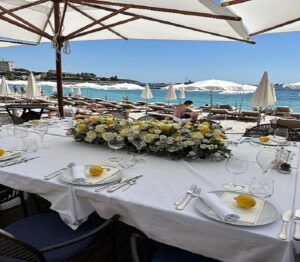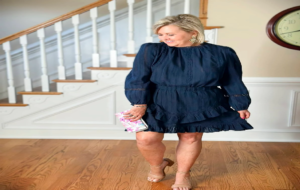Discovering the Timeless Appeal of Classic Eyewear

Few fashion accessories can compete with classic eyewear in terms of longevity. From the functional to the fashionable, eyewear has a rich and varied history that has evolved over centuries.
The History of Eyewear
It’s hard to imagine, but Italy was the birthplace of eyeglasses way back in the thirteenth century. These rudimentary frames, designed more for practicality than style, would evolve and transform over centuries to the diverse range of eyewear we see today.
Iconic Styles and Their Origin Stories
The Aviator
The Aviator style, synonymous with pilots and the military, has origins rooted in practical necessity. Developed in the 1930s for the purpose of shielding pilots’ eyes from dangerous UV rays, these glasses became popular due to their wide, teardrop-shaped lenses that provided a great deal of coverage and protection. Despite their practical origins, Aviators soon became a style icon in their own right, finding their way onto the faces of movie stars and musicians.
The Cat Eye
Feminine, stylish, and slightly rebellious, the Cat Eye glasses were born in the 1950s and quickly took the fashion world by storm. This style, known for its upswept outer edges reminiscent of a cat’s eyes, became a symbol of the modern, independent woman. It became even more popular when it was worn by celebrities like Marilyn Monroe and Audrey Hepburn.
The Wayfarer Sunglasses
Wayfarer sunglasses were introduced by Ray-Ban in the early 1950s. Their distinct trapezoidal frame and thick rims were a radical departure from the metal-framed eyewear of the time. Their simplicity and timeless appeal quickly catapulted them into mainstream popularity. The experts at Olympic Eyewear say that the design has stood the test of time, remaining a fashion staple for over six decades.
The Round Frame
The round frame has been a favorite of intellectuals and creatives since the 1920s. Its minimalist design and scholarly associations make it a classic style that continues to appeal to a wide audience. Famous faces from John Lennon to Harry Potter have donned this style, solidifying its place in eyewear history.
The Timeless Appeal of Classic Eyewear
The timeless appeal of these classic eyewear styles lies in their ability to effortlessly combine form and function. Their designs have stood the test of time, offering practical solutions to vision and protection needs, while also making a stylish statement.
The versatility of these styles also contributes to their enduring popularity. Classic eyewear can complete any ensemble, from informal to formal; it also looks great on all kinds of face shapes. Whether you’re channeling a vintage vibe with cat eye glasses or opting for the cool, laid-back appeal of Wayfarer sunglasses, there’s a classic style to suit every face and personality.
The Craftsmanship of Classic Eyewear
Despite the vast array of eyewear styles available today, there is something distinctly compelling about classic frames. It’s the detail and artistry that goes into their construction that people find so appealing.
From the drawing board to the final product, each pair of classic eyewear is a testament to meticulous design and engineering. Designers consider not just the aesthetics but also comfort, durability, and lens technology. The process involves careful selection of materials, precision cutting of lenses, and painstaking assembly of the components.
Conclusion
Fashion trends may come and go, but the perpetual popularity of classic eyewear is a testament to their classic design and use.
Whether you’re a dedicated follower of fashion or simply someone who appreciates quality and style, classic eyewear offers something for everyone. They serve a bigger purpose than just improving your sight or stopping the sun from hurting your eyes. Eyewear is a part of who you are, a reflection of your fashion sense, and a tribute to the long history of eyewear.








